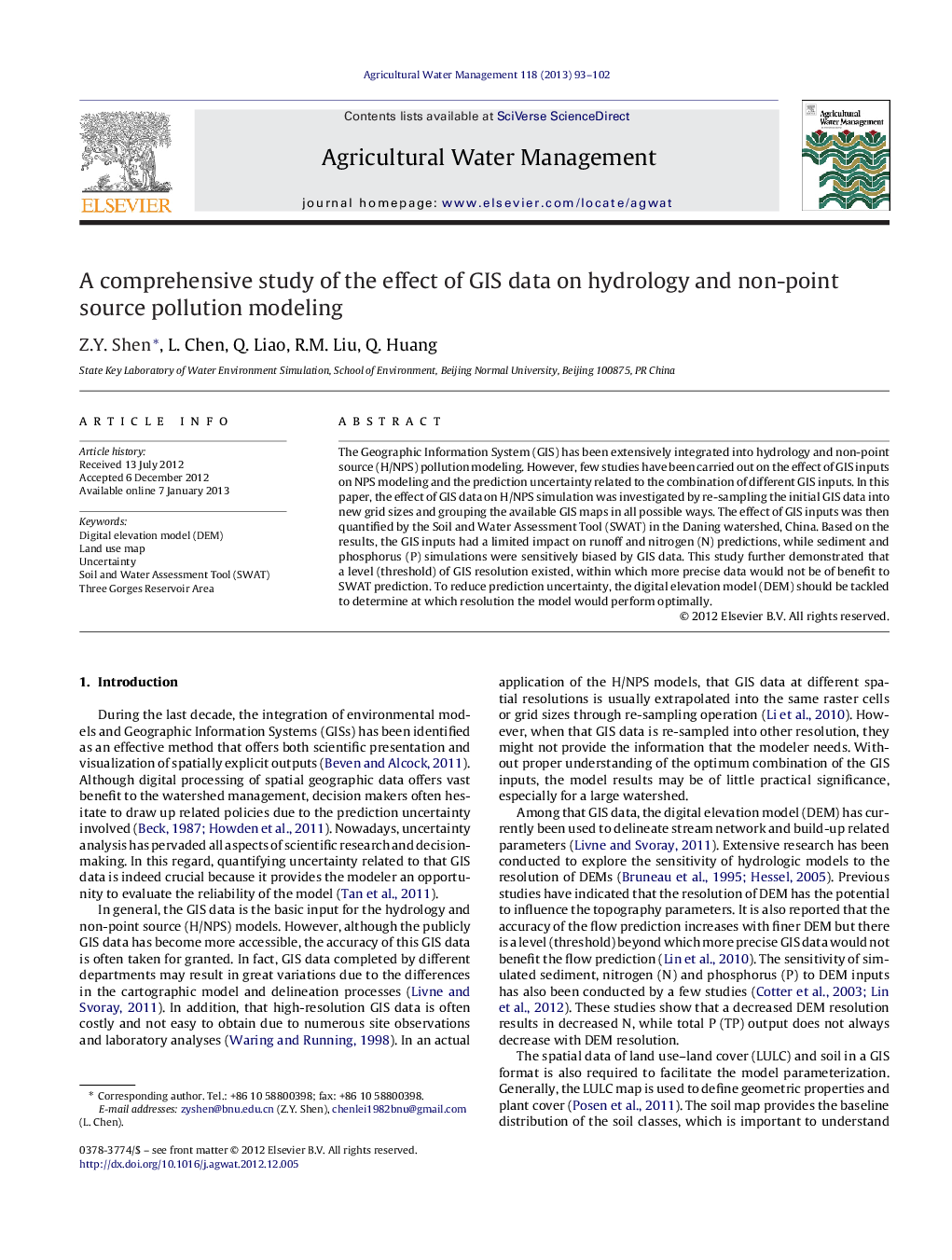| Article ID | Journal | Published Year | Pages | File Type |
|---|---|---|---|---|
| 4478949 | Agricultural Water Management | 2013 | 10 Pages |
The Geographic Information System (GIS) has been extensively integrated into hydrology and non-point source (H/NPS) pollution modeling. However, few studies have been carried out on the effect of GIS inputs on NPS modeling and the prediction uncertainty related to the combination of different GIS inputs. In this paper, the effect of GIS data on H/NPS simulation was investigated by re-sampling the initial GIS data into new grid sizes and grouping the available GIS maps in all possible ways. The effect of GIS inputs was then quantified by the Soil and Water Assessment Tool (SWAT) in the Daning watershed, China. Based on the results, the GIS inputs had a limited impact on runoff and nitrogen (N) predictions, while sediment and phosphorus (P) simulations were sensitively biased by GIS data. This study further demonstrated that a level (threshold) of GIS resolution existed, within which more precise data would not be of benefit to SWAT prediction. To reduce prediction uncertainty, the digital elevation model (DEM) should be tackled to determine at which resolution the model would perform optimally.
► The effect of the GIS combinations on watershed modeling is evaluated. ► This paper indicates sediment and P outputs are sensitively biased by GIS data. ► Threshold resolutions exist within which more precise data show no advantage. ► The digital elevation model determines the optimal combination of GIS inputs.
